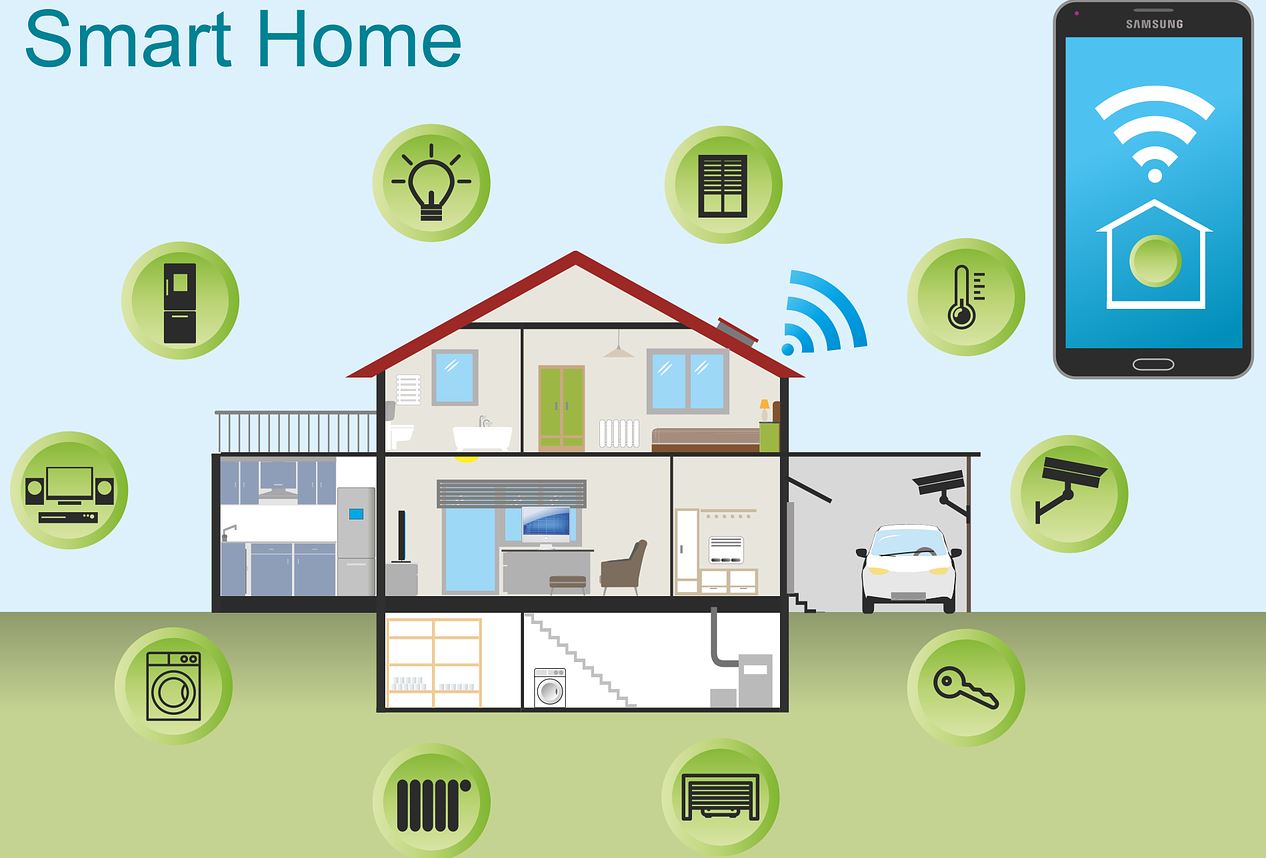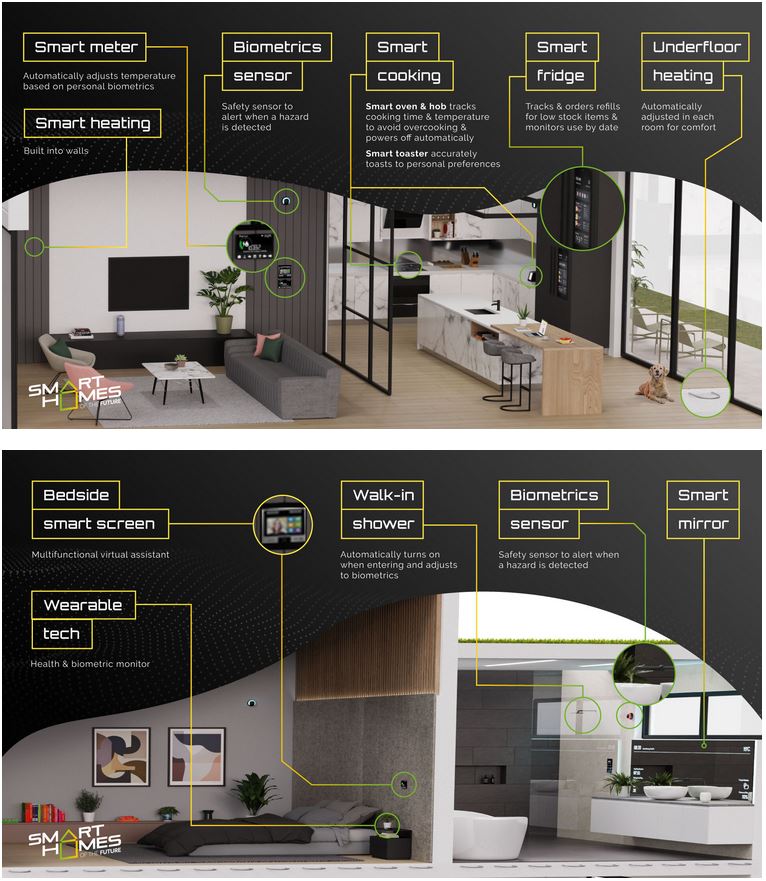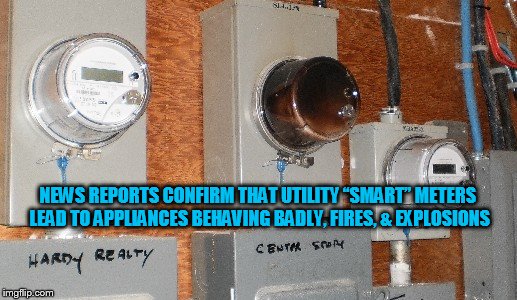 By B.N. Frank
By B.N. Frank
It’s amusing as well as alarming when industry folks go to great lengths to depict “Smart Homes” as something desirable now and in the future. For many years already, experts have warned about privacy and cybersecurity risks associated with ALL “Smart” and wireless technology including “Smart Home” appliances and technology (see 1, 2). In fact, Samsung has discontinued its Smart Home “SmartThings Ecosystem”.
In regard to utility “Smart” Meters – electric, gas, and water – they are also privacy invasive and at a high risk for cybersecurity issues. Additionally, they have been associated with HIGHER bills, fires (see 1, 2, 3), explosions, and other inconveniences including health problems (see 1, 2, 3, 4, 5, 6, 7, 8, 9, 10, 11, 12, 13, 14) which have led to lawsuits (see 1, 2). Many utility companies now offer “opt out” programs because of all the complaints.
Nevertheless, smart tech experts have stuff to sell so they aren’t going to mention any of that.
From Showhouse UK:
The future of smart tech: How homes will look in 50 years
From health monitoring panic rooms to biometric sensors in every corner, by 2071 our homes could virtually run themselves, according to insight from a leading smart tech expert.
With the recent announcement of the 2025 ban on gas boilers and the government’s focus on slashing carbon emissions, making positive changes to live more sustainably is a priority.
But just how could our homes look in 50 years’ time?
The electric heating and technology innovators at Rointe have partnered with tech expert Cecilia Harvey, founder of Tech Women Today, to reveal what a typical smart home could look like by 2071 and how this will affect our ability to enjoy a more energy efficient, economical and sustainable lifestyle.
Some of the most interesting smart home innovations to expect in 2071 include:
- Biometric scanners in every room to monitor activity and detect potential danger;
- A responsive heating system that adapts each room to individual needs;
- Centralisation and automation of all appliances in the home;
- A panic room linked to appropriate authorities;
- Health monitoring technologies that track an individual’s vitals.
Below are more details on exactly what we can expect from our homes in 50 years time…
Efficient living space that adapts to individual needs
A centralised combined utility that supports heating, electricity and air conditioning could help to make energy consumption much more efficient and sustainable. The home will be entirely connected, including all kitchen, bathroom and electrical appliances and heating devices. This could allow for a consolidation of energy consumption data which in turn will improve energy efficiency.
Cecilia explains: “Smart meters will incorporate data from sensor technology embedded in clothing, accessories and furniture. The meters will dynamically adjust based on your personal biometrics, meaning that each room in your home will always be at the optimum temperature to suit your comfort levels, whether that’s staying cool whilst working out in your living room or keeping warm at bedtime.
“Instead of traditional radiators and towel rails taking up space, heating could be embedded within the structure of your house, including the walls, floors and around the window to ensure efficiency.”
Efficient living space that adapts to individual needs
Ms. Harvey signs off by promoting today’s smart devices as helping to “lead to more efficient and eco-friendly life”. OMG NO!!! Today’s smart devices are deliberately manufactured to have short shelf-lives and this leads to more Electronic Waste (E-Waste). In fact, tech companies continue to be criticized for not doing more to reduce it (see 1, 2, 3). In 2020 the U.N. warned that 82% of E-Waste is NOT being recycled. Earlier this year it was reported that 40% of Millennials replace their wearable electronic devices every 6-12 months. People truly concerned about the environment wouldn’t encourage anyone to go out and buy more smart devices. They’d encourage them to buy less.
Activist Post reports regularly about utility “Smart” Meters and other unsafe technology. For more information, visit our archives and the following websites:
- Wireless Information Network
- Coalition to Stop Smart Meters
- EMF Safety Network
- StopSmartMeters.org
- Smart Meter Harm
- Smart Grid Awareness
- Smart Meter News
- Take Back Your Power
- The People’s Initiative
- Wireless Information Network
- Electromagnetic Radiation Safety
- Environmental Health Trust
- Physicians for Safe Technology
Top image: Pixabay
Become a Patron!
Or support us at SubscribeStar
Donate cryptocurrency HERE
Subscribe to Activist Post for truth, peace, and freedom news. Follow us on Telegram, SoMee, HIVE, Flote, Minds, MeWe, Twitter, Gab, Ruqqus and What Really Happened.
Provide, Protect and Profit from what’s coming! Get a free issue of Counter Markets today.



Be the first to comment on "Smart Tech Expert: Future “Smart Homes” Will Include Sensors in Clothing, Furniture, etc. Connected to Hazardous “Smart” Meters"